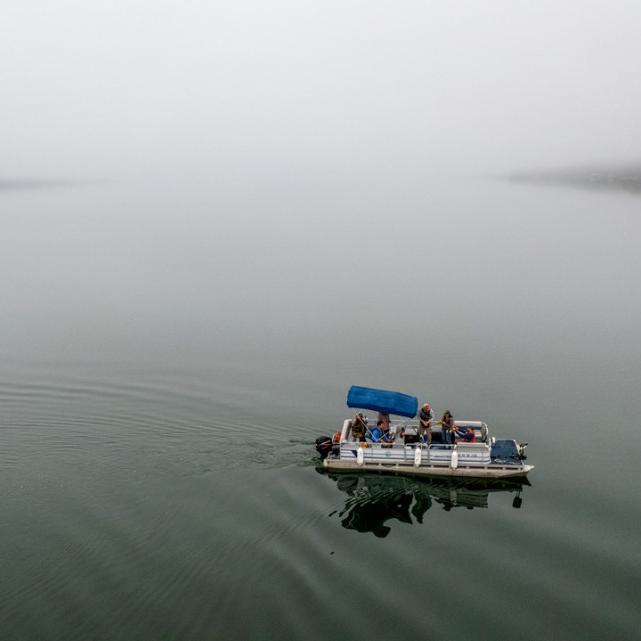A researcher in the College of Agriculture and Life Sciences has received a new grant to help New York state learn more about how ponds and wetlands store and release greenhouse gases, as part of the state’s efforts to achieve carbon neutrality by 2050.
Meredith Holgerson, assistant professor in the Department of Ecology and Evolutionary Biology, has been working with staff in New York’s Department of Environmental Conservation (DEC) for the past two years as they attempt to inventory all potential sources and sinks of greenhouse gases, a requirement of the 2019 Climate Leadership and Community Protection Act. The DEC has now awarded Holgerson $745,289 over three years to examine greenhouse gas dynamics related to ponds and wetlands.
“If we’re going to continue to create farm and residential ponds, we should try not to create a new climate problem,” Holgerson said. “Many ponds emit a lot of methane – some of the highest fluxes from any waterbody on Earth – while others emit very little. Our goal should be to design ponds that emit little methane and store a lot of carbon in their sediments.”
Most research on carbon storage and greenhouse gas emissions in bodies of water has centered on lakes. Far less is known about the climate impact of ponds and wetlands. Understanding this piece of the carbon budget is critical, Holgerson said, because even though these bodies of water are small, there are hundreds of millions of them globally.
“There’s an estimated 40,000 ponds in New York state alone, and that’s definitely an underestimate because there aren’t good records,” she said. “Although our work focuses on New York, the data and analysis we’re compiling will be useful for other states, regions and countries.”
Holgerson’s work will include:
- Reaching out to private landowners to seek access to their ponds. One reason there is little research on ponds is that they often exist on private land and are therefore harder for researchers to access. Cornell Cooperative Extension and soil and water conservation districts are aiding this effort, which includes using satellite imagery to locate ponds.
- Collecting sediment cores and measuring greenhouse gas fluxes to determine how much carbon ponds store or emit per year.
- Producing a statewide wetlands survey, in collaboration with the New York Natural Heritage Program, and sampling greenhouse gas and carbon storage data for 64 wetlands across the state.
- Developing guidance for DEC and the state’s Department of Agriculture and Markets on how to design climate-friendly ponds. Ag and Markets provides cost-sharing to help farmers create new ponds for drought resilience, and Holgerson’s work could inform guidance or requirements for pond design to access state funds.
- Conducting experiments at the Cornell Experimental Ponds to test variables that may impact greenhouse gas cycling, such as the influence of various plant or fish communities, nutrient levels in ponds and the role of bacteria in producing greenhouse gases at various oxygen levels.
“DEC is pleased to support Professor Holgerson’s study,” said DEC Commissioner Basil Seggos. “New York state’s freshwater wetland habitats are extensive and diverse, and Professor Holgerson’s research will provide unprecedented insight into the role that northeastern wetlands play in storing carbon and better understanding the greenhouse gas benefits of healthy wetland ecosystems.”
Krisy Gashler is a writer for the College of Agriculture and Life Sciences.





